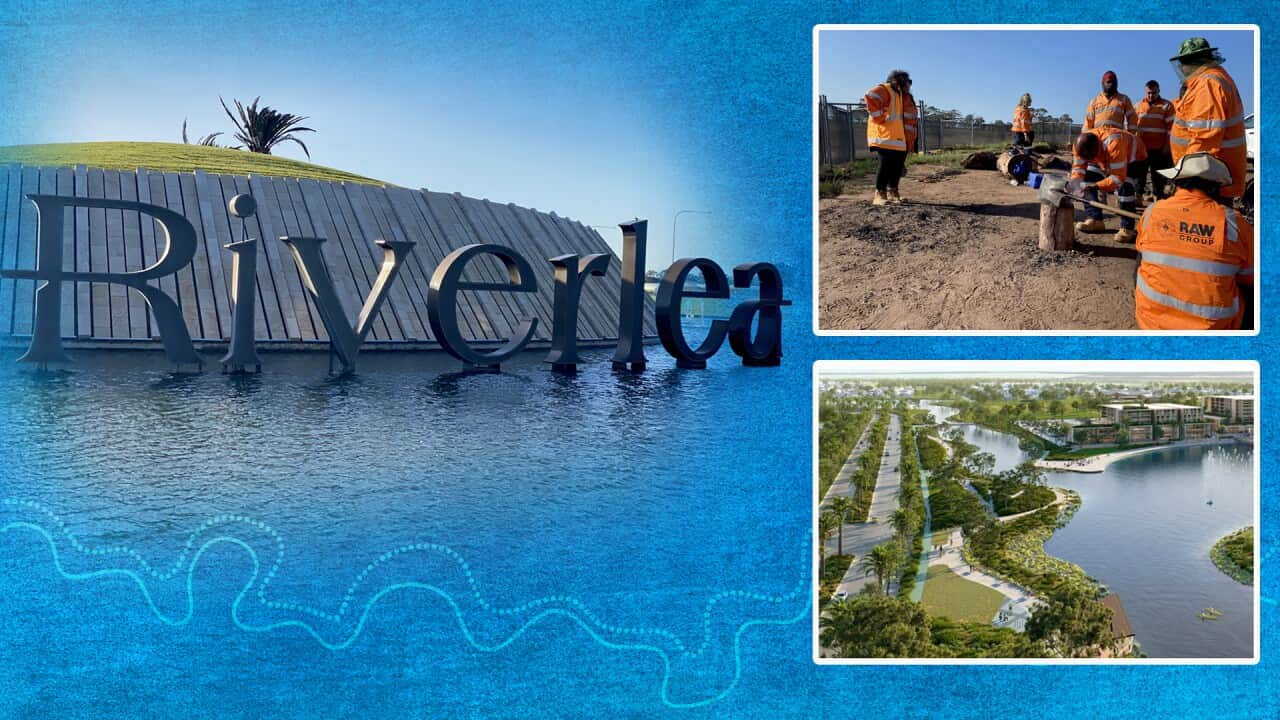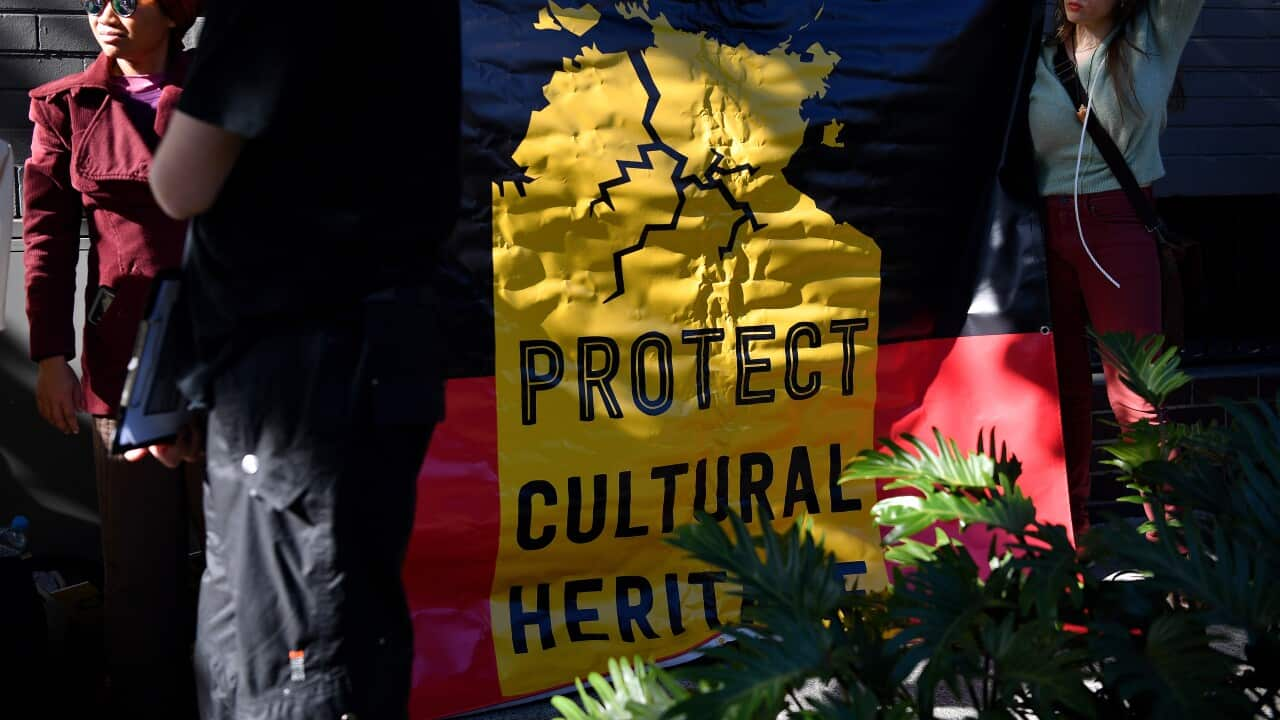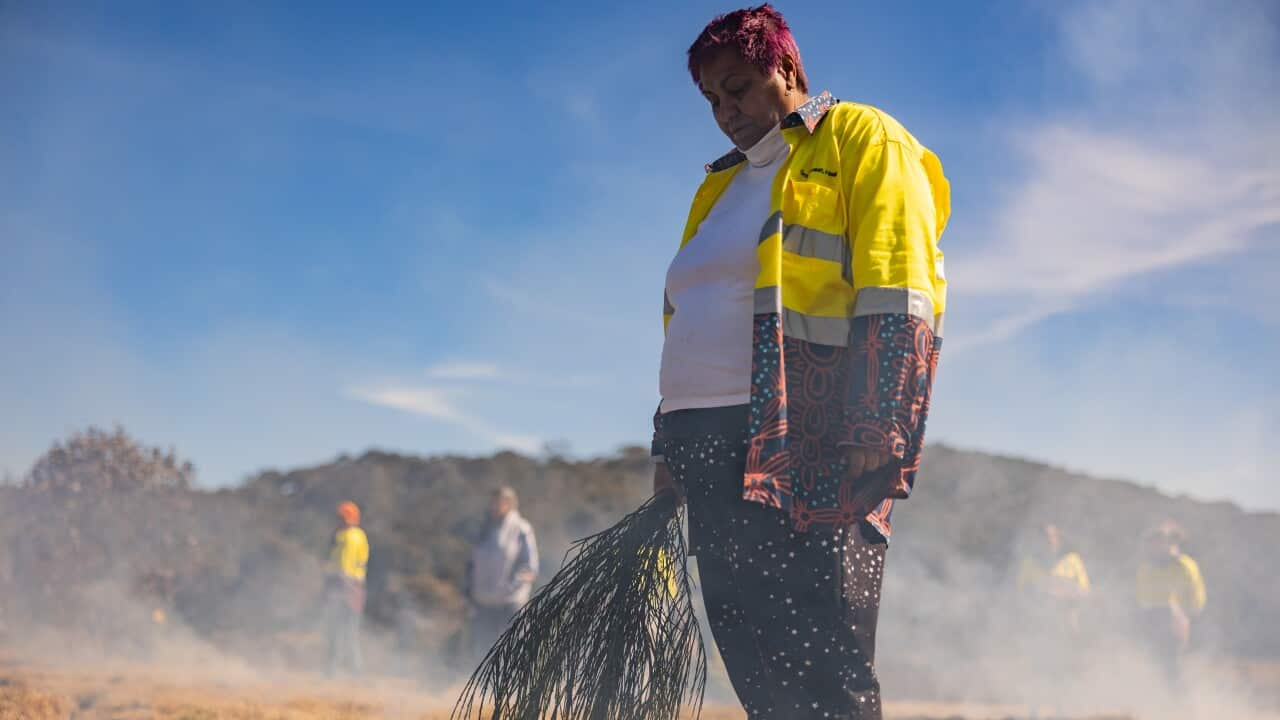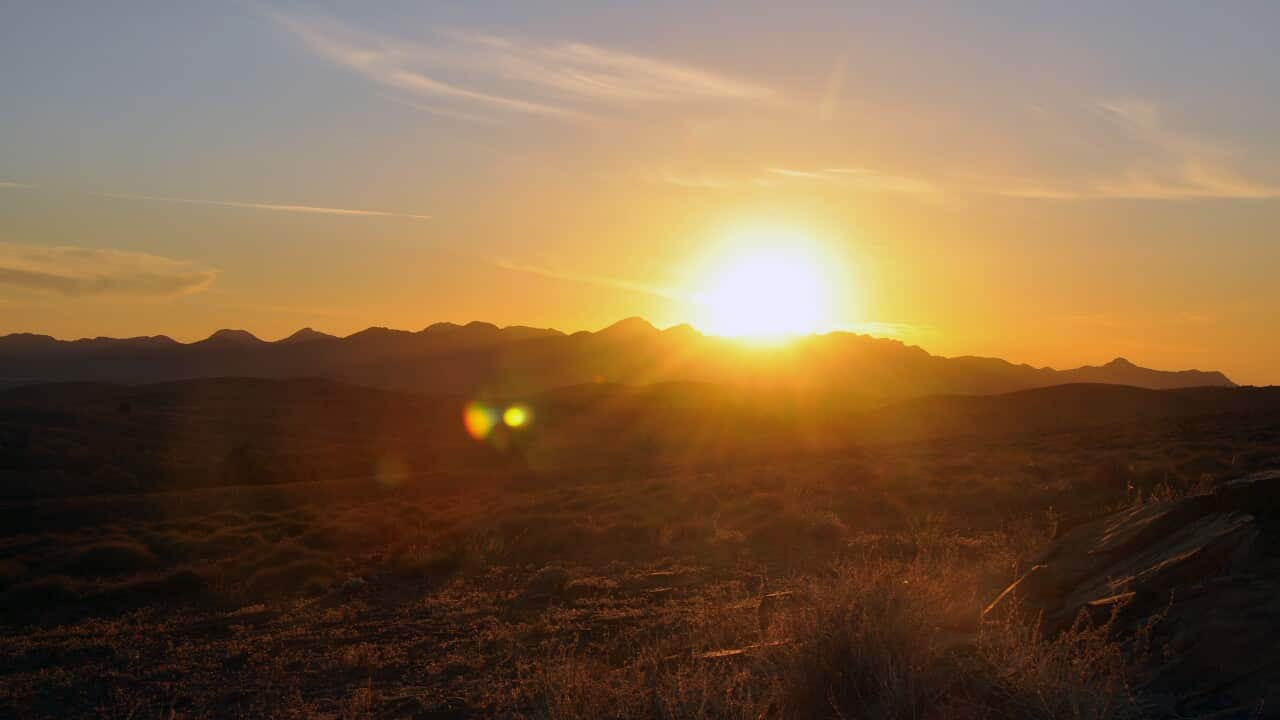An Indigenous burial ground unearthed on South Australia's largest housing development on Kaurna land is believed to be among the largest and most significant sites in the state.
Work was brought to a halt in July at the Riverlea development after the discovery of ancestral remains was reported to the police.
The palm-lined estate promising ‘a whole new way of living' will eventually be home to 40,000 residents under a 15-year plan to build 12000 homes, 30 km north of Adelaide.
But now at least 31 individuals have been uncovered in two areas. The blocks at one of the sites have already been sold to homebuyers, the other is pegged for future release, according to the project’s website.
Speaking to SBS/NITV at the burial ground Aboriginal Heritage manager Alison Harvey said there could be hundreds more skeletal remains at or near these grounds.
“The further west we go the more worrying it is,” Ms Harvey, indicating the nearby waterway where dozens of fragments of traditional ovens have been found.
“We are going to find more burials, it’s just a matter of when,” the Kaurna-Narungga woman said. “This is unbelievably huge.”
It’s rare to find such a rich archaeological site that supports oral histories and is so close to a capital city.
Early research suggests the site is a traditional Kaurna burial ground pre-dating colonisation and potentially up to 6000 years old. It’s believed to also be the resting place for Aboriginal ancestors from other nations
The Aboriginal Heritage team have already found more than 1200 artefacts including spear and boomerang tips and items not usually found in South Australia.
“It gives you an idea of how heavily populated this area was, how much of a campground it was and how many families may have been living here,” said Ms Harvey who has been working in heritage and repatriation for thirty years.
“We’ve also found artefacts that you don’t find on the Adelaide plains – and that tells a story that this was a trading ground too.”

Alison Harvey at the Riverlea site. Source: Supplied / NITV/SBS
Application to excavate divides community
The developer, Walker Corporation, is seeking authorisation from the state government to, “excavate, uncover, damage, disturb or interfere with Aboriginal sites, objects and, or ancestral remains”. Under South Australia’s Aboriginal Heritage Act 1988 it is illegal to damage Aboriginal heritage without the permission of the Minister for Aboriginal Affairs.
In the meantime, the ancestral remains are being stored on-site in a shipping container, a source of concern for many in the wider Kaurna community.
The office of Aboriginal Affairs and Reconciliation (AAR) said it believed the remains have been managed appropriately to date.
“AAR has been consulting on the developer’s application under the Aboriginal Heritage Act and expects to provide its final report to the Minister for consideration in the coming months,” a spokesperson said.
But Traditional Owner Mark Catanzariti told SBS/NITV he was angry that he only learned about the scale of the discoveries from leaked photographs of the site.
Mr Catanzariti and other Kaurna community members are calling on the state government to reject the developer’s application.
“How would you feel if that was one of your grandparents, great-grandparents, cousins or someone that was related to you being dug out of the ground like a science project?” he said.
“I'm sure they would say not very good.”
They are also calling on the developer to adjust the layout to include a memorial garden over the burial ground.
"It would be a whole lot of relief. It would mean a lot of emotion would come to ease, knowing that they are going to stop continuing to pull our ancestors out and put them back where they came from," he said, touching his heart.

Traditional Owner Mark Catanzariti. Source: Supplied / NITV/SBS
“We are not going put up with people digging up our remains anymore. They’ve done it enough, I think there are about 4,000 remains in the South Australian Museum, and I don't know how many thousand remains overseas," he said.
"Enough is Enough.”
Kaurna Yerta Aboriginal Corporation CEO Tim Agius said the community’s preferred position was that the ancestors remain in their burial ground and not to be removed.
“That's been very loud and clear,” he said.
Heritage workers say the individual remains uncovered so far have been damaged by farming and require reburial.
Some Indigenous community members believe the disturbed spirits will create negative consequences for Kaurna… as well as those living on the disturbed burial ground.
Kaurna/Narungga woman Roselyn Coleman is concerned that homes built over the burial grounds would be “a really terrible place to live”, especially for families with young children.
“We want them to have a happy life with their family living on in their new homes,” she said.
"But if it's going to be there, it's not going to be a good place for them to live, or a safe place.”
The $6 billion dollar development is part of the South Australian government’s long-term plan to solve the state’s housing crisis.
This year a first-home owners grant was announced for new-builds to encourage young people to invest is estates like Riverlea.
Heritage worker Alison Harvey is also concerned about new homeowners.
“They’re going to dig swimming pools, they’ve going to dig foundations, they’re going to dig services. Just imagine coming across this in your own backyard,” she said.
“I think it’s a great kick in the face to homeowners."
Ms Harvey said she would like to see the archaeological site preserved as an education precinct.
“I think it’s a great opportunity for South Australia. We know what has been passed down to us from the elders but this now is teaching us more. It’s teaching our elders more.”
“The stories we can educate people about. For example, the tools we have found, what they ate, what medicines they used.”
Massacre fear ruled out
A small hole in the skull of one of the ancestors sparked community concern the Riverlea could be a massacre site.
SBS/NITV has sighted images of the remains in question but will not publish them for cultural reasons.
The Indigenous population were driven from their homelands or killed by early settlers when South Australia was established as a British colony.
Mr Catanzariti said historic watch towers used by white settlers to fire at Aboriginal people were a reminder of what happened to his people.
But the archaeological evidence in an unpublished report has categorically ruled out the burial ground at Riverlea as a massacre site.
It found the placement of individuals to be consistent with traditional Kaurna burial and identified no signs of European settlement.
The report found the hole in the skull was too small to have come from a bullet, particularly the bullets used in the mid-1800s.
It said the skull had most likely been impacted by a plough.
Back on the burial ground there is growing concern about how to care for the ancestors that have been unearthed and are now exposed to the elements awaiting an outcome.
Workers like Tiahna Silvy offer them daily smoking ceremonies and talk to the ancestors in language.
“I also like to stomp my feet a little bit which allows the ancestors to know that you are here," she said.
“You throw a rock behind your shoulder, and it also allows the ancestors to know that you’re here to protect them, and be safe and do the right thing by them, because if you don’t you get sick.”

Workers at the Riverlea site participating in a smoking. Source: Supplied / SBS/NITV
A spokesman for the developer said they are working "closely with KYAC representatives to make sure of the respectful treatment of ancestral remains and to also ensure the most appropriate outcome is implemented as recommended by Kaurna Elders at KYAC".
"Walker will continue to take advice and direction from the Kaurna elders and the SA Government as we work through the issues at hand."
















